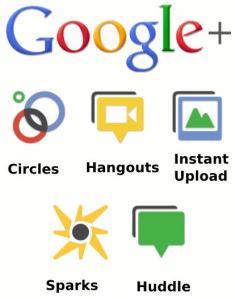This piece originally posted as part of American Banker’s BankThink two week series on the Future Model of Banking. Join the series contributors in discussing the types of products and services tomorrow’s banks might offer in this Thursday’s Tweet Chat.
“What is the future model of banking? What products and services will tomorrow’s banks offer that truly add value and that customers will be willing, even happy, to pay for? How will banks deliver/market these services? Think big and broad – five years out at least.”
American Banker Series IntroductionSenior Editor Marc Hochstein
Here was my response to the question: What is the future model of banking.
Customer behavior is changing. Expectations are shifting. Technology is accelerating this shift as it alters traditional relationships with our customers as well as the banking industry’s historical sources of revenue, growth, retention, and customer loyalty.
What is the future of the financial services model? To answer this question, we must also ask: What can we learn from changes in the design of consumer financial applications and in customer behavior? What is the role of financial data and identity in this exchange, and how do we make the concept of big data become a personalized, more meaningful small data experience? In the disruptive shift to digital, are there particular pieces of the model worth salvaging to avoid the fate of so many industries before it?
How you view the current environment likely correlates to your sense of urgency and overall disruption in the banking industry. The recent downturn is (mostly) behind us, the economy has a light breeze at its back, and banks have seen the return of record profits. But in the U.S. market alone, the largest 100 banks (the top 1.5%) hold over 80% of deposit and 75% percent of lending relationships, according to FDIC data. The industry feels uneven, the business model itself for the vast majority of players a bit muddled. David Kerstein of Peak Performance Group projects that by the end of this decade there will be 40% fewer banks and 50% fewer credit unions.
While we may not all agree on the impact, the shift to digital will certainly have consequences. The banking model is moving toward a truly contextual, customer-centric view. We’re competing against players that better leverage proximity, preference, and the proliferation of engaging experiences. From American Express to USAA, from Backbase to Zopa, shifts in consumer behavior demand less intrusive authentication, social connectivity and crowdsourcing, hyper-personalization of everything from offers to usability, as well as tailored assistance and support at critical moments. We are now face to face with an engaged customer base that expects a completely frictionless experience.
The banking industry has traditionally thrived on these areas of friction. It is, of course, where we make much of our profit. Historical friction complicates our customer journeys. New fees and constraints on evolving forms of money movement and management, elongated processes to validate and verify identity and account ownership, non-contextual evaluation of risk to extend credit — these are all cumbersome user experiences that fail to leverage data and associated knowledge in our systems. Friction in the financial system comes from the industry’s strong aversion to risk and attachment to historical centers of profit, its less-than-innovative reaction to regulation, as well as organizational structures focused around inflexible systems and processes.
Our model simply must change to reduce this embedded friction, whether it is in the form of fees or complicated processes. We must keep up with the simplicity, usability, and transparency customers now demand.
The disruptors see that the future of financial services will be won by removing traditional barriers and rapidly embracing the shift in consumer and business behavior. It’s clear that we are moving toward an era of engagement banking – a marketing, sales and service model that deploys technology to achieve customer intimacy at scale.
As we move into this new era, the idea of profiting from glaring areas of friction disappears. The crux of the disruption argument is that banks are being disintermediated. But I think in many ways the industry, at least certain players, are responding, and in many ways reverse engineering the attacks to its foundation. Larger banks and payment players see this shift and are focused on designing digital financial experiences to match nimble technology entrants that are poised to nibble at the industry’s income streams. Some are taking larger chunks, like PayPal and Square, and many more are poised to be equally disruptive (GoBank, Braintree and its Venmo unit). In this new era of applications and partnerships driven by application programming interfaces, you can practically build a complete banking experience on the rails of Twilio, Stripe, and IFTTT (“If This, Then That”). The financial services revolution may not be televised, but it will certainly be driven by APIs. I digress.
As much of traditional banking services become a utility, those that leverage personalized banking experiences for their profitable customer niche segments will thrive. As we move further into digital experience, the next decade will be even more incredibly disruptive than what we saw in the recent economic downturn.
There will be blood.
Delivering contextually aware financial services in beautifully crafted interfaces and experiences is becoming a necessity to maintain relevance with the digital natives. Over the next decade, we’ll see an incredible focus on:
- Customizing financial data and personalizing interfaces for varied consumer segments (similar to what we see from MoneyDesktop, iQuantifi, and Backbase)
- A renewed focus on simplified authentication (using multiple forms of biometrics and contextual assessments, from proximity to login patterns, like from BehavioSec, as well as voice driven vetting like that from Nuance Communications),
- Real time money movement at low or no-cost (as interchange goes to zero and person-to-person and account-to-account transfers go real time and as alternative networks like Dwolla expand),
- Further social media integration (American Express, CommBank’s Kaching, FNB and ICICI’s Facebook Banking), as well as crowdsourced lending (Zopa, Lending Club, SoMoLend) and JOBS Act-related funding (LearnVest)
- Leveraging and connecting offline and online behavior to disrupt the payment and procurement paradigm to serve up personalized insights through the use of Stock Keeping Unit transaction data through companies like Nerture,
- Offering service alternatives through proximity awareness (American Express or Banno’s contextual offers, delivering you specific suggestions for everything from coffee to televisions),
- Actionable notifications that prompt users through their mobile device to move money or pay bills to avoid fees or to better manage their current account spending (from Monitise to Personetics),
- Continuous assessments of financial wellness that prompt the consumer to take a specific action after a transaction, like filing a taxi receipt as a business expense or setting aside part of a deposited check as savings (similar to personalized spending and savings goals at Moven and Simple);
- Delivering daily or on-demand personalized information around the customer’s financial health and aggregated account status (Yseop, Narrative Science). This can range from news affecting an investment portfolio prompting changes in holdings to leveraging storytelling to assist in cross selling financial services.
Banking is no longer something customers do.
It’s an experience they completely control.
So where does that leave us, the bankers?
We are moving away from a banking relationship defined by the goal of being a customer’s primary financial institution to one where we focus on becoming their primary financial application. It’s no longer about wallet share. It’s about app-driven mindshare – as our customers reach into their pockets for their mobile device or use their glasses or other form of wearable technology and think about their financial relationship choices – before, during, and after a financial moment of truth.
So, what’s in your app?
This post was originally part of American Banker’s BankThink Future Model of Banking Series. My post appeared on July 23, 2013 and can be seen here. I encourage you to view (and share) all of the series posts here.
Bradley Leimer leads digital strategy for the Mechanics Bank in Richmond, Calif. He brings additional perspective from prior work leading marketing and business development teams in the credit union industry and through a decade driving big data and database marketing analytic services for national and regional bank clients.


